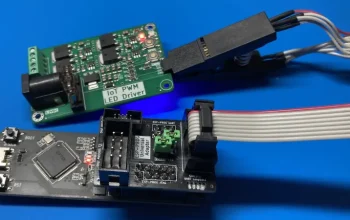For the uninitiated, GPS technology can feel like a labyrinth. It demands receiving faint signals buried beneath noise, complex calculations rooted in quantum mechanics, and – to top it all off – venturing outdoors for testing. But have you ever delved into the inner workings of a GPS antenna, particularly the active variety? This article delves into the fascinating world of active GPS antennas, focusing on a clever modification that allows a high-end antenna to function with an unexpected voltage input.
Table of Contents
ToggleUnveiling the Magic: How Active GPS Antennas Function
Unlike their passive counterparts, active GPS antennas boast an internal amplifier. This amplifier significantly boosts the weak GPS signal received by the antenna, leading to enhanced performance and faster signal acquisition, especially in challenging environments. But how does power reach the amplifier within the antenna cable that also transmits the signal back to the receiver? This ingenious feat is achieved through a technique called DC bias injection.
Here’s a simplified breakdown:
- Direct Current (DC): The receiver supplies a small amount of direct current (DC) through the coaxial cable. This DC current doesn’t carry the GPS signal itself but provides the necessary power for the antenna’s amplifier.
- Capacitive Coupling: A tiny capacitor within the antenna separates the DC power from the high-frequency GPS signal. This allows both the DC power and the GPS signal to travel concurrently on the same cable without interfering with each other.
- Amplified Signal: The amplifier within the antenna utilizes the DC power to amplify the weak GPS signal before transmitting it back to the receiver through the coaxial cable.
Cracking the Code: Modifying a Symmetricom Antenna for Higher Voltage
The article by [Tom Verbeure] sheds light on a captivating modification that allows a high-end Symmetricom active GPS antenna to function with a receiver supplying an unexpectedly high voltage. Typically, GPS receivers provide a DC bias voltage of around 3.3V or 5V to power the antenna’s amplifier. However, in this specific scenario, the receiver outputs a puzzling 12V.
[Tom]’s meticulously detailed post explores various potential solutions, ultimately opting for the cleanest approach: replacing the voltage regulator within the antenna itself. This voltage regulator is a crucial component that controls the amount of power delivered to the amplifier. By installing a suitable replacement regulator designed for the higher 12V input, [Tom] successfully modifies the antenna. Additionally, replacing a protection diode ensures optimal operation.
The outcome? The modified antenna no longer registers as a short circuit and functions flawlessly. This insightful post by [Tom] serves as a comprehensive guide, not only for those seeking to perform a similar modification but also for anyone curious about the inner workings of active GPS antennas and DC bias injection.
Beyond the Basics: Exploring Additional GPS Antenna Hacks
If your current device isn’t compatible with active GPS antennas, fret not! This article expands your knowledge base by referencing another intriguing GPS antenna hack covered previously. This resourceful hack involves modifying a Starlink dish to utilize an active antenna, thereby bolstering signal strength and potentially mitigating jamming issues in remote locations.
By delving into these clever modifications, you gain a deeper understanding of the intricacies of GPS technology and the potential for optimization through innovative solutions.
This article aimed to shed light on the fascinating world of active GPS antennas and the ingenious engineering behind them. It further explored a captivating voltage hack that expands the functionalities of a high-end antenna. With this newfound knowledge, you can approach GPS technology with a sense of empowerment and explore further ingenious hacks to enhance your GPS experience.










